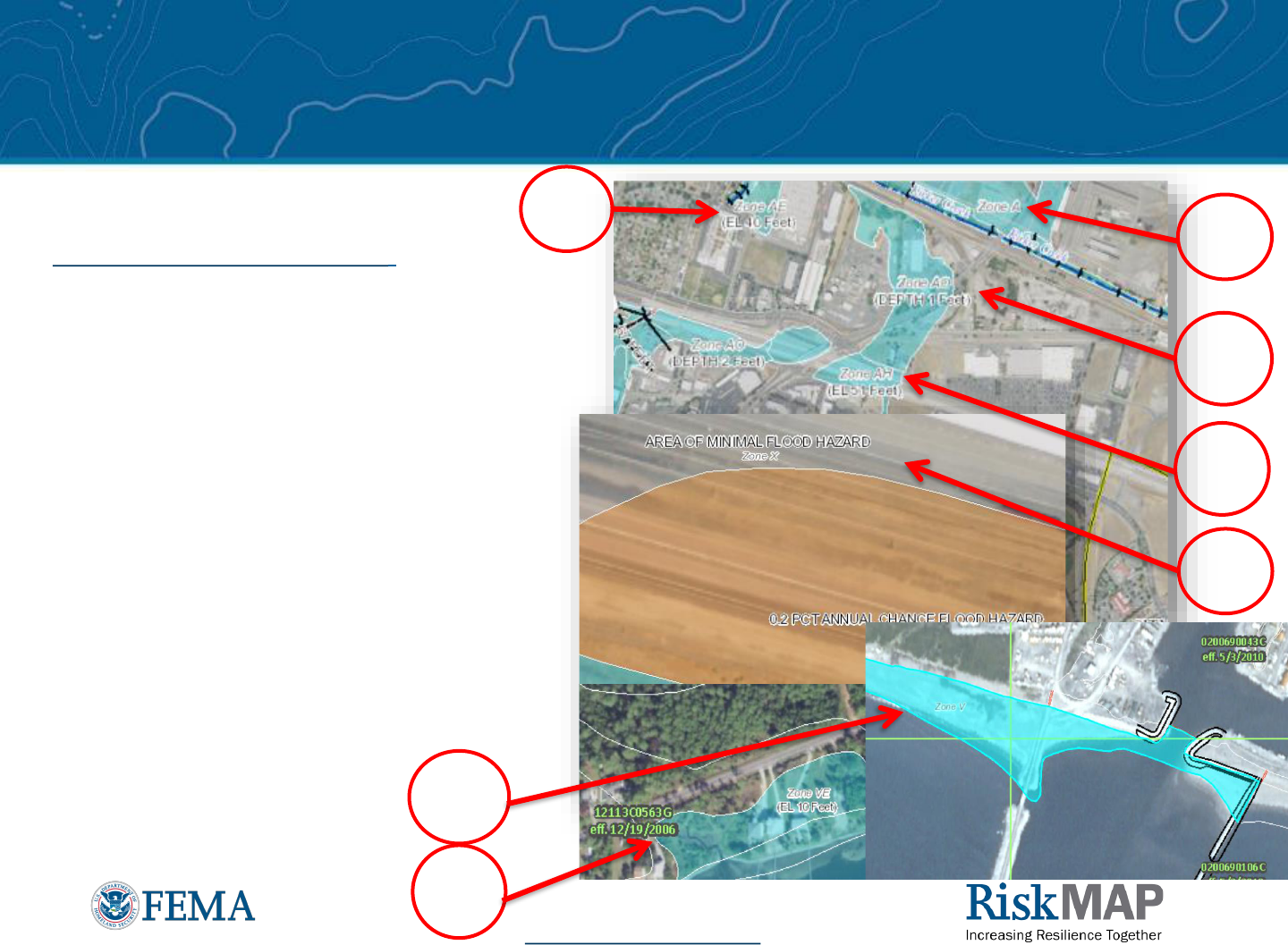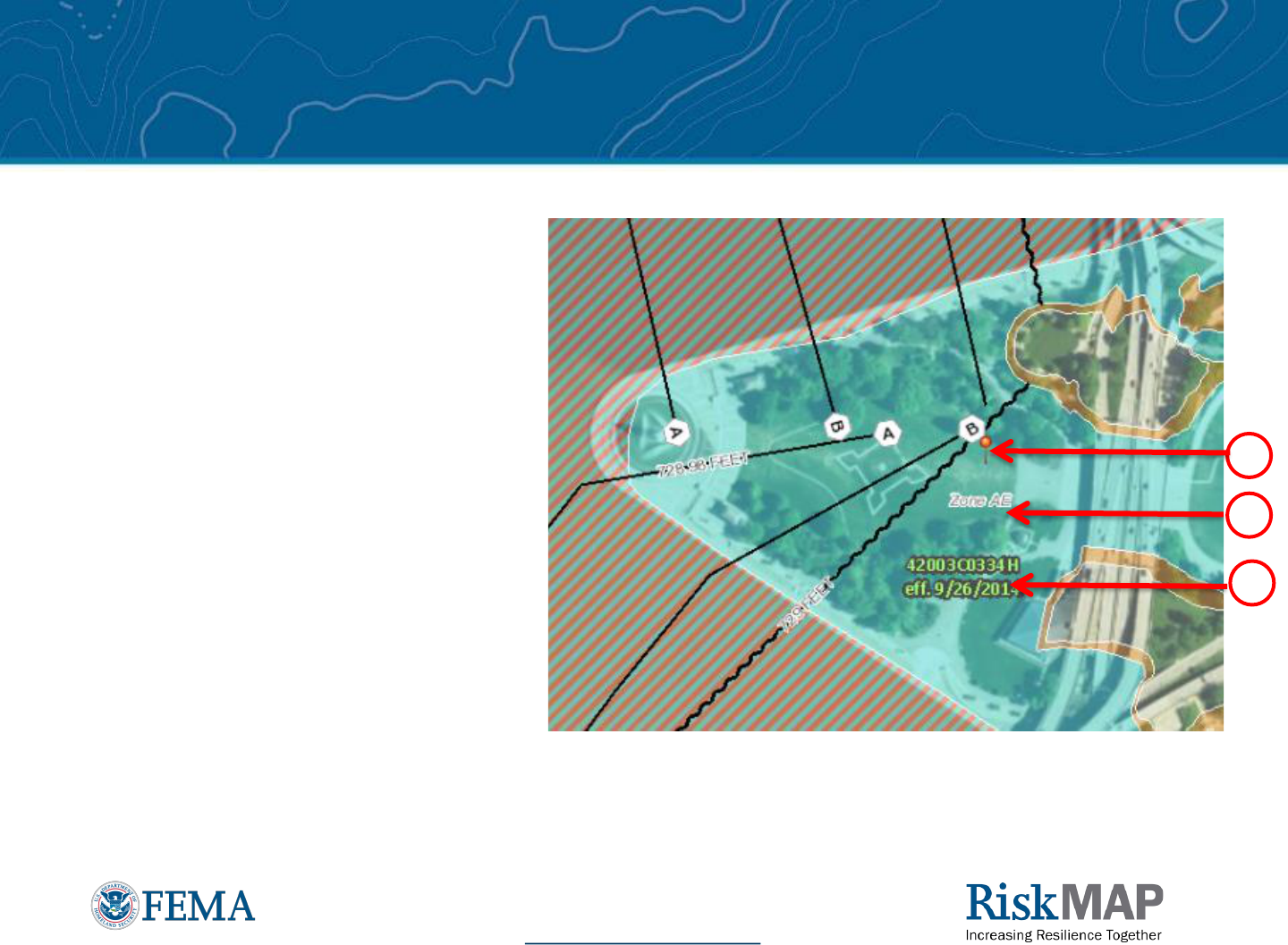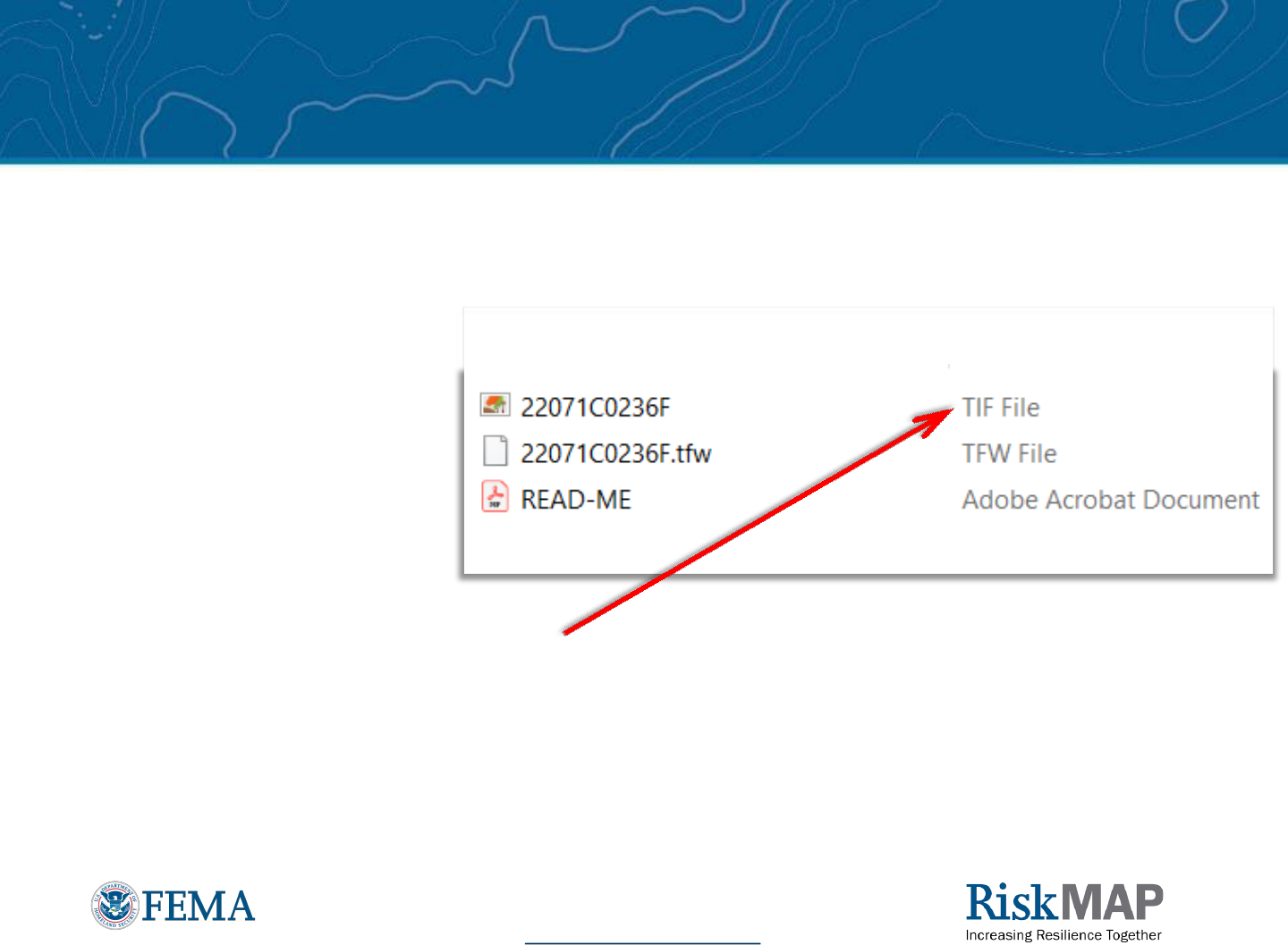
How to Read a
Flood Map
January 2022

What is a Flood Map?
A Flood Insurance Rate Map (FIRM, or flood map) is the official map of a
community on which defines both the special flood hazard areas and the flood
zones applicable to the community. This map is used by the National Flood
Insurance Program (NFIP) for floodplain management, mitigation, and insurance
purposes. The flood map is the official source for determining flood risk within a
community.
Commonly depicted on flood maps:
▸ Flood Zone Designations
▸ Base Flood Elevations (BFE)
▸ Floodplain Boundaries
▸ Roads and Landmarks
2
Table of Contents

3
What are Flood Zone Designations?
Flood Zone Designations are
geographic areas as having different
levels of flood risk. Each zone is
represented differently on the flood
map to convey low, moderate, and
high-risk flood zones.
The images on the right highlight the
high-risk flood zones (ZONE A/AO/AH)
in a blue shade; the moderate-risk
areas (ZONE X) have orange shading
and low risk areas (ZONE X) are clear
or unshaded.
A
X
AH
AO
V
VE
AE
Table of Contents

What are Flood Zone Designations (cont’d)?
▸ Special Flood Hazard Areas (SFHAs) are high-risk areas shown on the flood map
as shaded zones beginning with the letters A or V
• The SFHA is defined as the land area covered by the floodwaters of a base flood
• In communities that participate in the NFIP, all home and business owners with
structures in high-risk areas who hold mortgages from federally regulated or insured
lenders are required to buy flood insurance and adhere to floodplain management
regulations
▸ Non-Special Flood Hazard Areas are moderate- to low-risk areas shown on the
flood map as zones beginning with the letters B, C, or X (including shaded &
unshaded)
• The risk of flooding is lower, but risk still exists In communities that participate in the
NFIP, flood insurance is available, but not mandatory, for all property owners and
renters in these zones typically at a lower rate
▸ Some flood maps also include areas where there are possible, but
undetermined, flood hazards or unstudied areas
• These areas are shown on flood maps as “Zone D”
4
Table of Contents

Terms Summary
▸ Flood Map
• The official FEMA-generated flood map that shows a community’s different
flood hazard areas. Flood maps are utilized by the NFIP for floodplain
management, mitigation, and insurance purposes
▸ Flood Zones
• Defined geographic areas of varying flood hazard risk. The mandatory flood
insurance purchase requirement applies in Special Flood Hazard Areas
▸ Special Flood Hazard Area (SFHA)
• High-risk areas shown on the flood map as zones beginning with A or V
▸ Non-Special Flood Hazard Areas
• Moderate- to low-risk areas shown on the flood map as zones beginning with
the letters B, C, or X
▸ Base Flood Elevation (BFE)
• The computed elevation to which floodwater is anticipated to rise during the
base (1-percent-annual-chance) flood event
5
Table of Contents

Terms Summary (cont’d)
▸ Letter of Map Change (LOMC)
• A document issued by FEMA that revises or amends the flood hazard
information shown on the flood map. Types of LOMCs include Letters of Map
Revision (LOMRs), Letters of Map Revision Based on Fill (LOMR-Fs), and
Letters of Map Amendment (LOMAs)
▸ Letter of Map Revision (LOMR)
• A document that officially revises a community’s effective flood map based on
technical data or other information provided by the community. Developers,
engineering firms, and a community’s Chief Executive Officer (CEO) may apply
for a LOMR with acknowledgement from the community
▸ Letter of Map Amendment /Letter of Map Revision Based on Fill (LOMA/LOMR-F)
• An official amendment made to an effective flood map determining whether a
building, lot, or portion of a property is inadvertently included in the Special
Flood Hazard Area (SFHA)
• Property owners may apply for a LOMA or LOMR-F
6
Table of Contents

Where and How Do I Find my Flood Map?
The FEMA Map Service Center (MSC) is the official public source for flood map. Use
the MSC to find your flood map.
Navigate to:
1. msc.fema.gov
2. Insert the address into the
“Enter an address…” bar
3. Select the “Search” button
The page will populate the
search results for your
location
7
Table of Contents
1
2
3

1
1
Read Your Flood Map (cont’d)
Legend Includes:
1. Pin showing
approximate location
(can be adjusted)
2. Map panels
3. Other areas
4. SFHAs
5. Other Areas of Flood
Hazard
6. Other Features such as
1
2
3
4
5
6
7
profile baseline, limit of
study, etc.
7. General Structures such
as levee, dike, etc.
10
Table of Contents

Read Your Flood Map (cont’d)
Zoomed-in View of Specified
Location Shows:
1. Pin at approximate location
2. Map Number and Effective
Date
3. Flood Zone Designation (In
this case, Zone AE)
1
2
3
*As indicated previously: Zone AE is a high-risk area. Mandatory flood insurance purchase requirements
and floodplain management standards apply.
11
Table of Contents

Using the NFHL Viewer (cont’d)
Zoomed-In View of Specified
Location Shows:
1. Pin at approximate
location
2. Flood Zone Designation
(In this case, Zone AE)
3. Map Number and
Effective Date
1
2
3
*As indicated previously: Zone AE is a high-risk area. Mandatory flood insurance purchase requirements and
floodplain management standards apply.
14
Table of Contents

Download Your Flood Map (cont’d)
Open File:
▸ The file will open in the default program
for viewing pictures or files, usually
these files are PNG or TIF files
▸ Using the features in the default
program, users can zoom and pan as
needed to view details
▸ A Legend is available for reference
18
Table of Contents

More Information
Flood Preparation
▸ How Do I Buy Flood Insurance?
▸ Hazard Mitigation Assistance
Grants
▸ FloodSmart
▸ The National Flood Insurance
Program
▸ Financial Assistance
Flood Resources
▸ Special Flood Hazard Area
▸ Know Your Flood Risk
▸ Flood Insurance Rate Map (FIRM)
▸ Flood Insurance Rules and
Legislation
▸ National Risk Index for Natural
Hazards
▸ Glossary (PDF)
▸ Contact Us
19
Table of Contents









